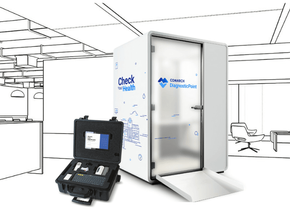Fintech plays major role in suptech and regtech developments

A new report by the Financial Stability Board has found evidence that fintech is playing an increasingly important role in the sector of compliance, through the development of regtech (regulatory technology) and suptech (supervisory technology) services.
The study examines the ‘demand and supply drivers’ as well as the challenges and enablers that have led to the demand in suptech and regtech services. It also looks at which technologies are best serving the phenomenon, such as cloud-based services, AI and application programme interfaces, along with the potential pitfalls.
Benefits
RegTech and SupTech tools could fortify the resilience of the current financial system. This would be realised via facilitating or improving supervision, surveillance, and enforcement through regulatory bodies, along with reporting and compliance.
By automating these functions through new technology, especially in the areas of risk management, matters of human error are greatly reduced. However, on the flip side, states the report, over automation of certain procedures creates “excessive dependence” which means some potential risk sources get overlooked.
Tools are also changing the way authorities collect, store, manage and analyse data. Companies should review the policy priorities of using tools and apps, with future elements of consideration for authoritative and regulatory bodies.
According to the survey carried out in the report, there are three main areas of benefits in the further development and use of suptech and regtech. Those are:
Data collection and visualisation: suptech can make data much more accessible by transforming it into a palatable and visual format – such as charts and dashboards. Suptech also gathers the appropriate data for machine learning applications that forecast trends and manage analysis. Regtech, meanwhile, allows for the analysis of complex data pools that also include consumer and risk management data.
Real-time monitoring: AI and ML (machine learning) surveillance and assessments of real time risks can be improved with the use of suptech apps, which also then allows for predictive analysis. Regtech can then be employed to monitor and support the real time risk management through enhanced insights in business decision-making and regulatory organisations.
Reduced costs: The digitisation of data streamlines operational processes. This reduces the need for so much IT support and staffing. There could be cost reductions linked to processes including regulatory reporting, data collection and risk management.
Risks
As technology changes so rapidly, and global financial markets struggle with seismic shifts, the rush to implement new systems to cope with the changes, raises several concerns. The report pinpoints eight areas that could be consequential.
Data standardisation and data quality: Maintaining data quality is essential for the effective use of suptech and regtech apps. But non-traditional information sources, such as social media, can be challenging in terms of standardising data collection.
Data security: Information breaches, hacking and system vulnerabilities could increase if greater “interconnectedness” becomes regulated between organisations and external parties.
Third-party dependents: The more companies that rely on third-party services (cloud providers etc) the more risks are amplified.
Resource requirements and costs: Implementing suptech and regtech platforms and software will require the services of an increased number of experts, and also for training for staff in the suptech system. Regulatory authorities may need to develop training programmes for current employees. Competing with the private sector for qualified talent can also be expensive and challenging.
Localisation of data: Localised data storage can cause complications when employing risk-management practices. This may prevent companies leveraging the full capabilities of suptech and regtech services.
Opportunities for regulatory arbitrage: Regtech and suptech may be able to offer insights into how some “regulated institutions” are able to play the system. For example, regtech might get more effective at pinpointing regulatory loopholes. Suptech might also identify information that causes warnings or alerts within the suptech system.
Competition: The implementation of suptech and regtech may be hindered by extreme and financially unviable regulatory systems. This discourages new market entrants that lack resources, funding, expertise and infrastructure to fulfil the regulatory processes.
Reputation and risk: All technology has limits – success is determined by the ability to assess and detect weaknesses. Suptech might require a degree of manual oversight and applications could also lack transparency.
The future
The report concludes that as technology develops so swiftly, regulatory bodies, should investigate increasing their automated processes, with the view to generating new insights, optimising operations, improving decision-making, and reducing the cost of data collection, analysis and reporting.
Authorities should also look at adopting a “user-centric suptech strategy” that fits with their goals. Suptech and regtech are new and unexplored areas. Some uses will succeed. Others will prove unsuccessful. But authorities and regulated institutions should nurture an attitude of collaboration and innovation and be open to conversations that will set the basis for a successful regulatory landscape.






